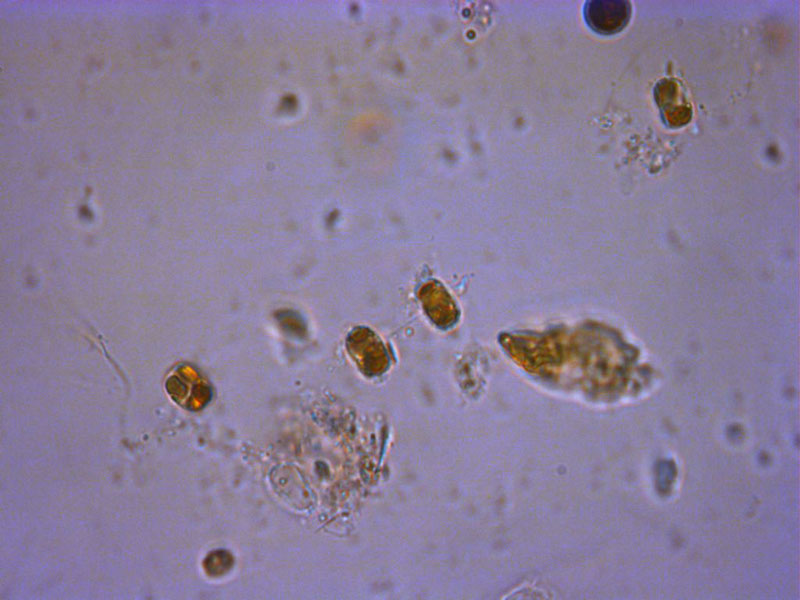Amphiprora cf.
Algal Group: Diatoms (Bacillariophyta)
Description
oblong shape with indent in central portion of cell, cells can appear twisted; 25-150 µm long
Where we found it
Indian River and Suwannee Sound
Sebastian
DE;GJ;PI;HB;PR
Frequency of occurrence
Indian River: 9% in 116 samples taken
Suwannee Sound: 36% in 120 samples taken
What Are The Effects On Clams?
Good
Why is it good?
acceptable food item for clams
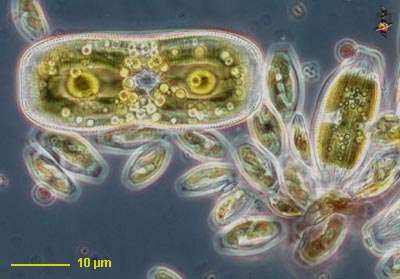
Bellerochea horologicalis
Algal Group: Diatoms (Bacillariophyta)
Description
cylindrical cells; 30-100 µm long, 22-35 µm wide; form ribbon-like chains
Where we found it
Suwannee Sound
DE;GJ;PI;HB;PR
Frequency of occurrence
Indian River: 0% in 116 samples taken
Suwannee Sound: 23% in 120 samples taken
What Are The Effects On Clams?
Good
Why is it good?
acceptable food item for clams
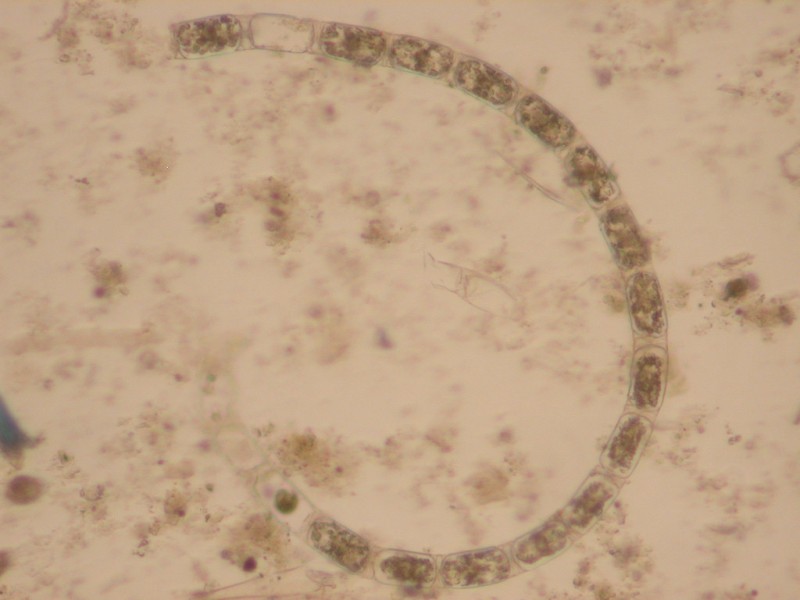
Cerataulina pelagica
Algal Group: Diatoms (Bacillariophyta)
Description
cylindrical cells with short spines at terminal ends; 10-40 µm diameter; can form chains
Where we found it
Indian River and Suwannee Sound
Sebastian
DE;GJ;PI;HB;PR
Frequency of occurrence
Indian River: 9% in 116 samples taken
Suwannee Sound: 38% in 120 samples taken
What Are The Effects On Clams?
Good
Why is it good?
acceptable food item for clams
Ecological considerations:
major bloom-former; blooms can occur any time of year, but most common in fall and spring
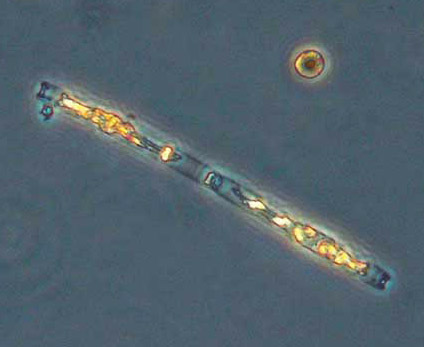
Chaetoceros spp.
Algal Group: Diatoms (Bacillariophyta)
Description
cylindrical cells (appear rectangular); 4-84 µm wide; single or chains, spines (setae) at corners
Where we found it
Indian River and Suwannee Sound
Sebastian
DE;GJ;PI;HB;PR;SR
Frequency of occurrence
Indian River: 34% in 116 samples taken
Suwannee Sound: 44% in 120 samples taken
What Are The Effects On Clams?
Good; Bad
Why is it good?
acceptable food item for clams
Why is it bad?
Some species have long silica spines that can damage bivalve gills.
Ecological considerations:
resting spores common; major bloom-former; blooms can occur any time of year, but most common in fall and spring
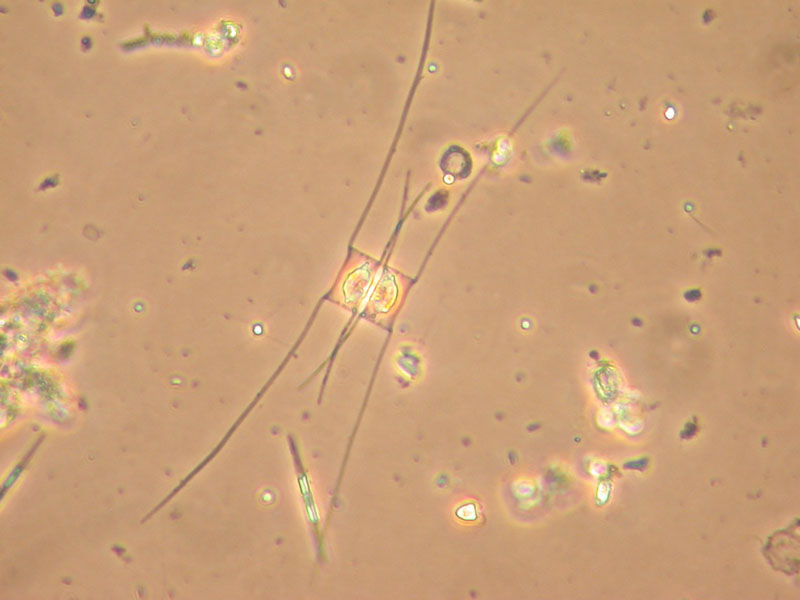
Dactyliosolen fragilissimus
Algal Group: Diatoms (Bacillariophyta)
Description
cylindrical cells; 12-20 µm diameter; can form chains connected by small central process
Where we found it
Indian River and Suwannee Sound
Sebastian
DE;GJ;PI;HB;PR
Frequency of occurrence
Indian River: 16% in 116 samples taken
Suwannee Sound: 17% in 120 samples taken
What Are The Effects On Clams?
Good
Why is it good?
acceptable food item for clams
Ecological considerations:
major bloom-former; blooms can occur any time of year, but most common in fall and spring
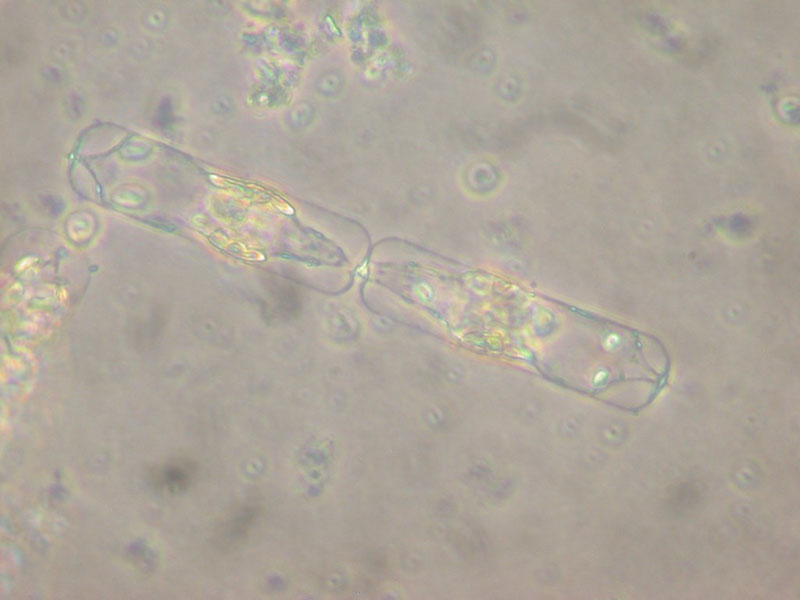
Leptocylindrus danicus
Algal Group: Diatoms (Bacillariophyta)
Description
cylindrical cells; 5-16 µm diameter; forms chains, multiple chloroplasts
Where we found it
Indian River and Suwannee Sound
Sebastian
DE;GJ;PI;HB;PR
Frequency of occurrence
Indian River: 7% in 116 samples taken
Suwannee Sound: 34% in 120 samples taken
What Are The Effects On Clams?
Good
Why is it good?
acceptable food item for clams
Ecological considerations:
major bloom-former; blooms can occur any time of year, but most common in fall and spring
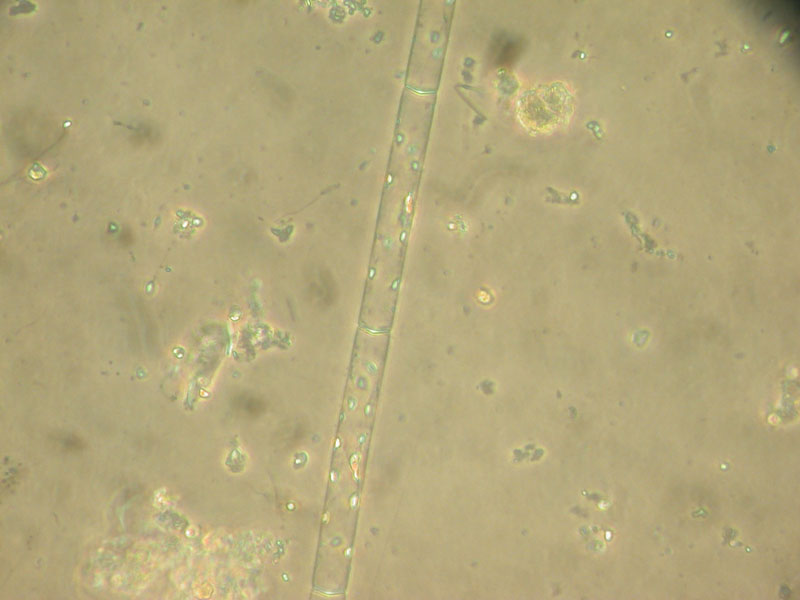
Navicula spp.
Algal Group: Diatoms (Bacillariophyta)
Description
linear, leaf-shaped, oblong cells, numerous morphological variations within genus; 15-80 µm long, 4-10 µm wide
Where we found it
Indian River and Suwannee Sound
Sebastian
DE;GJ;PI;HB;PR;SR
Frequency of occurrence
Indian River: 28% in 116 samples taken
Suwannee Sound: 45% in 120 samples taken
What Are The Effects On Clams?
Good
Why is it good?
acceptable food item for clams

Nitzschia spp.
Algal Group: Diatoms (Bacillariophyta)
Description
spindle-shaped or rectangular cells, can have flexible, long tapering ends, numerous morphological variations within genus; 5-100 µm long, 5-20 µm wide
Where we found it
Indian River and Suwannee Sound
Sebastian
DE;GJ;PI;HB;PR;SR
Frequency of occurrence
Indian River: 84% in 116 samples taken
Suwannee Sound: 76% in 120 samples taken
What Are The Effects On Clams?
Good; Bad
Why is it good?
acceptable food item for clams
Why is it bad?
Some species in this genus have been shown to produce amphidiniols, compounds with hemolytic (lyse red blood cells) properties, but reports from the natural environment are rare.
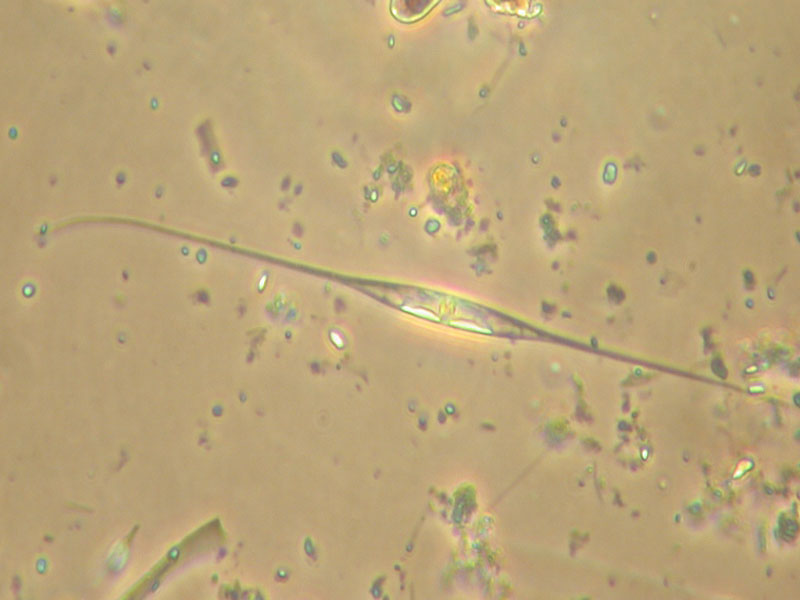
Odontella spp.
Algal Group: Diatoms (Bacillariophyta)
Description
cylindrical cells; 10-110 µm wide; small horns at each pole, joined in straight or zig-zag chains, some species solitary
Where we found it
Indian River and Suwannee Sound
Sebastian
DE;GJ;PI;HB;PR;SR
Frequency of occurrence
Indian River: 13% in 116 samples taken
Suwannee Sound: 68% in 120 samples taken
What Are The Effects On Clams?
Good
Why is it good?
acceptable food item for clams
Ecological considerations:
major bloom-former; blooms can occur any time of year, but most common in fall and spring
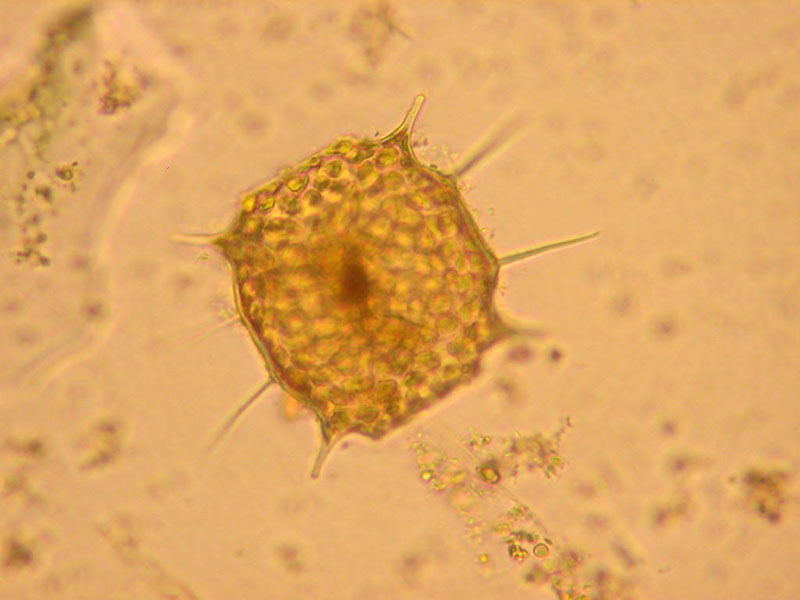
Paralia sulcata
Algal Group: Diatoms (Bacillariophyta)
Description
cylindrical cells; generally 25-30 µm diameter; joined in chains
Where we found it
Indian River and Suwannee Sound
Sebastian
DE;GJ;PI;HB;PR;SR
Frequency of occurrence
Indian River: 36% in 116 samples taken
Suwannee Sound: 74% in 120 samples taken
What Are The Effects On Clams?
Good
Why is it good?
acceptable food item for clams
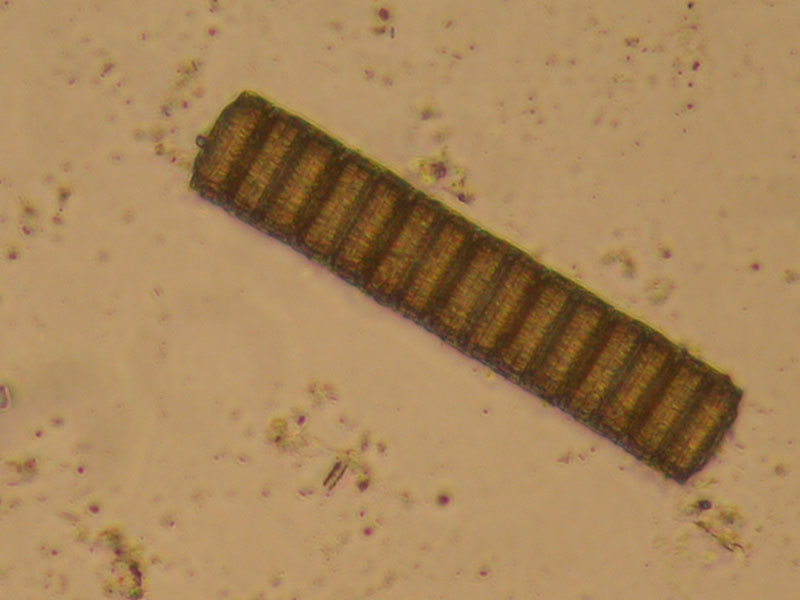
Pseudo-nitzschia spp.
Algal Group: Diatoms (Bacillariophyta)
Description
rectangular cells, can have pointed ends; >25-100 µm long; joined in stepped colonies of overlapping cell ends
Where we found it
Indian River
Sebastian
Frequency of occurrence
Indian River: 49% in 116 samples taken
Suwannee Sound: 0% in 120 samples taken
What Are The Effects On Clams?
Good; Bad
Why is it good?
acceptable food item for clams
Why is it bad?
Some species have been associated with production of domoic acid, a neurotoxin responsible for Amnesic Shellfish Poisoning (ASP). Toxicity of local strains has not been confirmed.
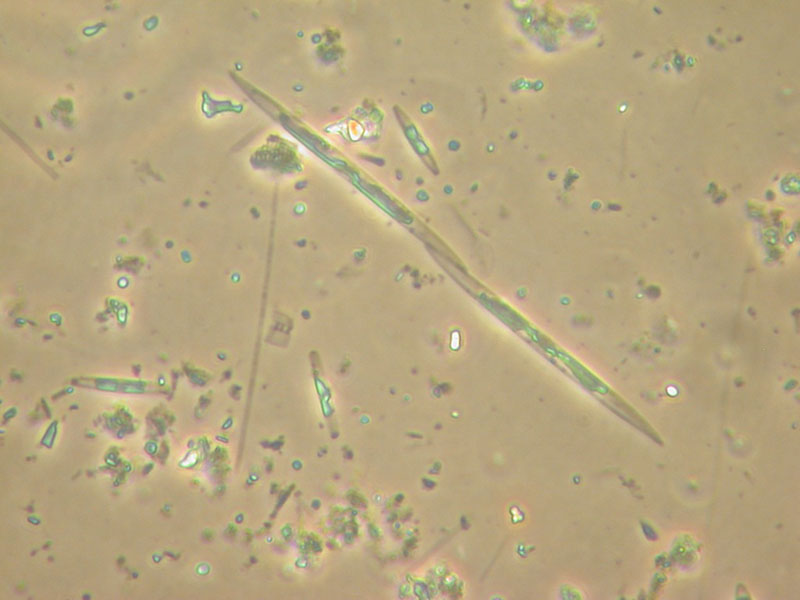
Rhizosolenia setigera
Algal Group: Diatoms (Bacillariophyta)
Description
cylindrical cells; 4-20 µm diameter; singular or joined in chains ending in needle-like structures
Where we found it
Indian River and Suwannee Sound
Sebastian
DE;GJ;PI;HB;PR;SR
Frequency of occurrence
Indian River: 23% in 116 samples taken
Suwannee Sound: 73% in 120 samples taken
What Are The Effects On Clams?
Good
Why is it good?
acceptable food item for clams
Ecological considerations:
major bloom-former; blooms can occur any time of year, but most common in fall and spring
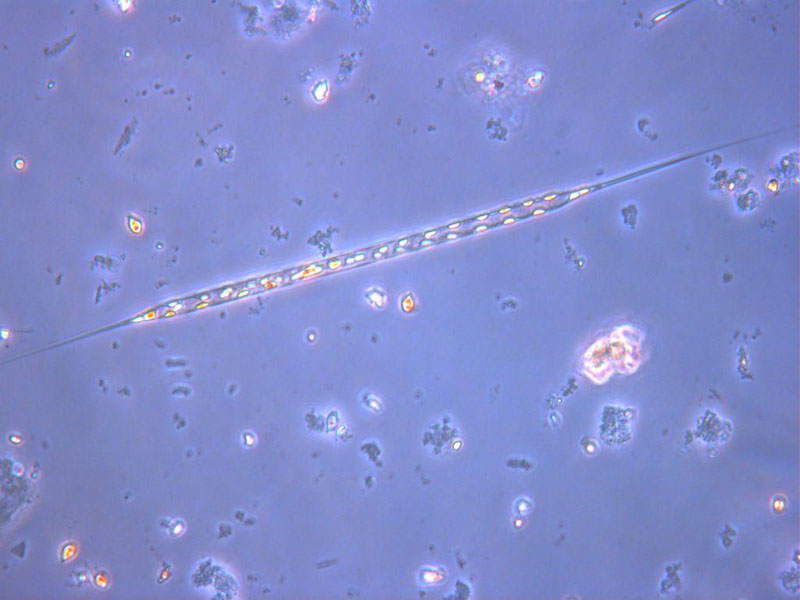
Skeletonema spp.
Algal Group: Diatoms (Bacillariophyta)
Description
cylindrical cells; 2-21 µm diameter; joined in chains by delicate external threadlike processes
Where we found it
Indian River and Suwannee Sound
Sebastian
DE;GJ;PI;HB;PR
Frequency of occurrence
Indian River: 47% in 116 samples taken
Suwannee Sound: 51% in 120 samples taken
What Are The Effects On Clams?
Good
Why is it good?
acceptable food item for clams
Ecological considerations:
major bloom-former; blooms can occur any time of year, but most common in fall and spring; extreme bloom events can be associated with reduced oxygen levels in the water column
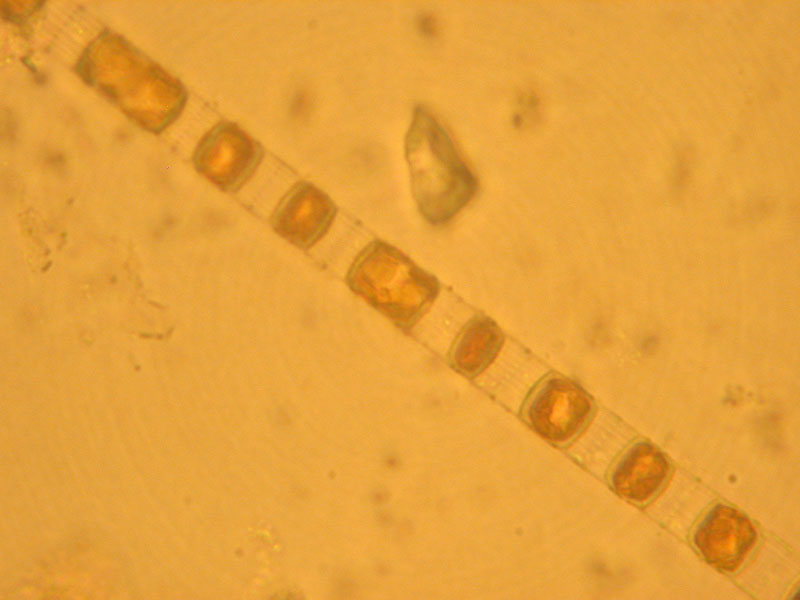
Thalassionema nitzschioides
Algal Group: Diatoms (Bacillariophyta)
Description
rectangular cells; 10-110 µm long, 2-8 µm wide; single or joined into zig-zag or star-shaped colonies
Where we found it
Indian River and Suwannee Sound
Sebastian
DE;GJ;PI;HB;PR;SR
Frequency of occurrence
Indian River: 28% in 116 samples taken
Suwannee Sound: 41% in 120 samples taken
What Are The Effects On Clams?
Good
Why is it good?
acceptable food item for clams
Ecological considerations:
major bloom-former; blooms can occur any time of year, but most common in fall and spring
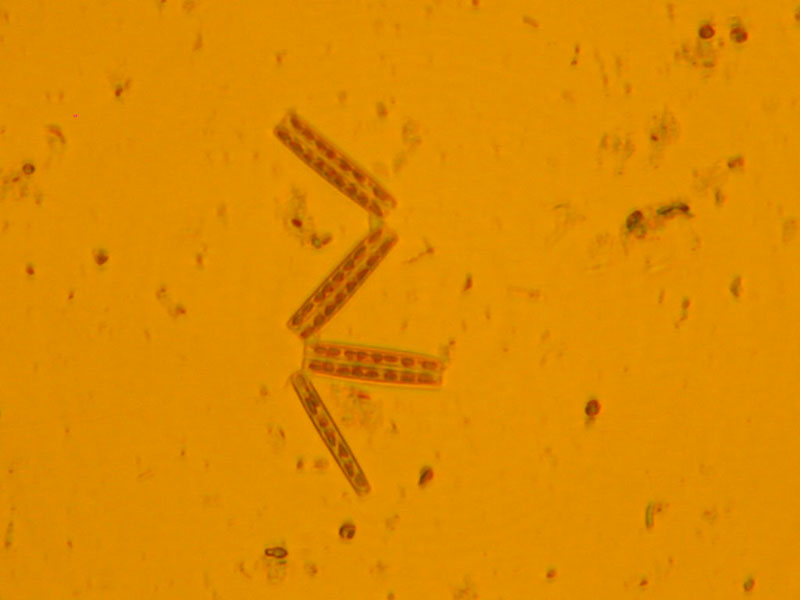
Thalassiosira spp.
Algal Group: Diatoms (Bacillariophyta)
Description
cylindrical cells; generally 7-20 µm diameter; singular or joined in chains by threads
Where we found it
Indian River and Suwannee Sound
Sebastian
DE;GJ;PI;HB;PR;SR
Frequency of occurrence
Indian River: 17% in 116 samples taken
Suwannee Sound: 73% in 120 samples taken
What Are The Effects On Clams?
Good
Why is it good?
acceptable food item for clams
Ecological considerations:
resting spores known for some species
